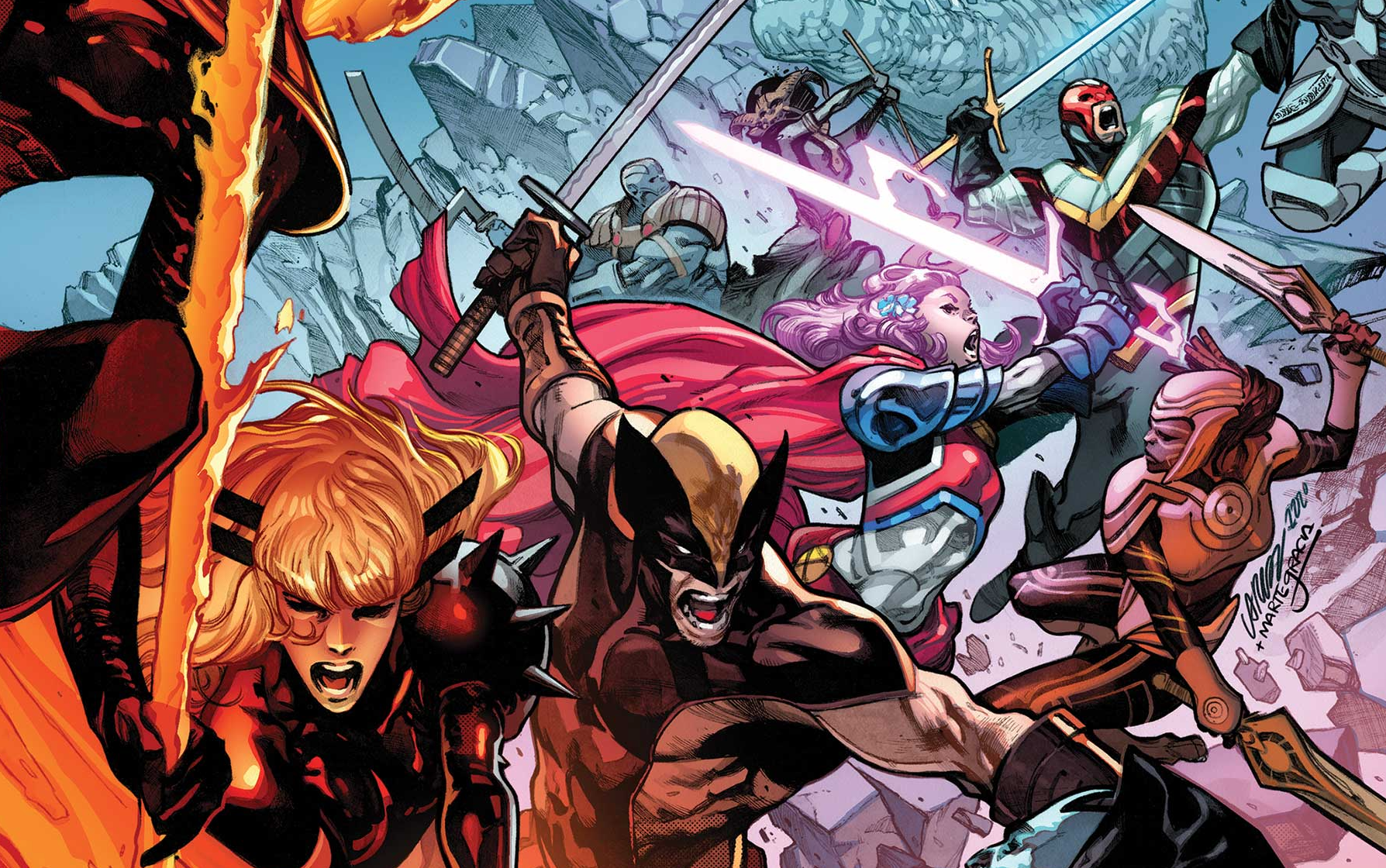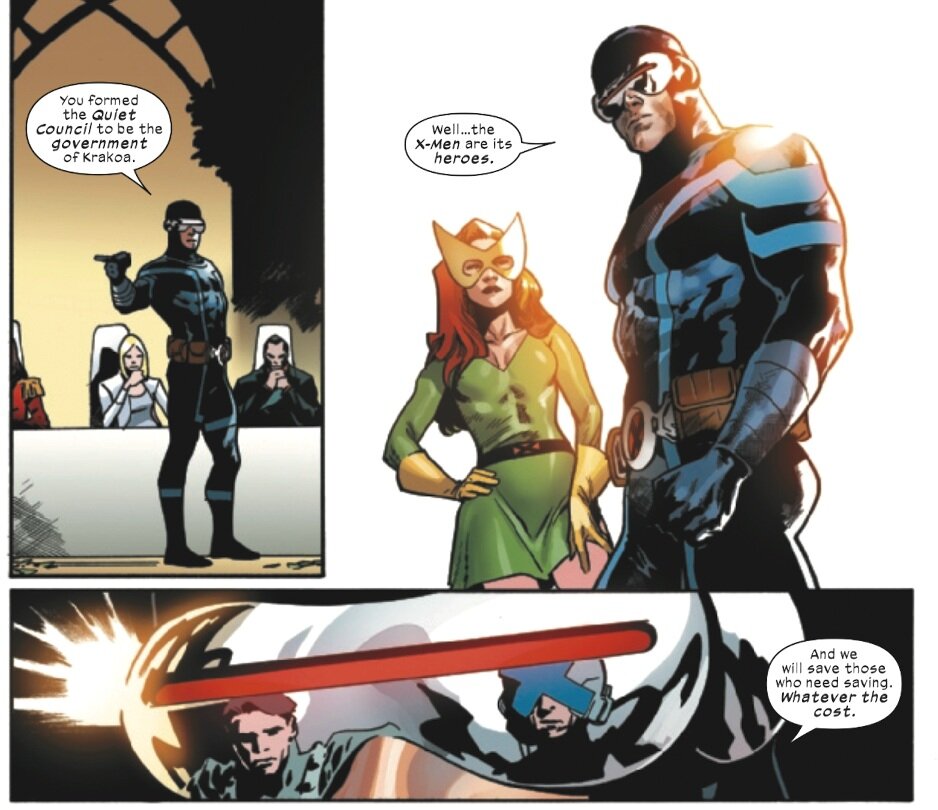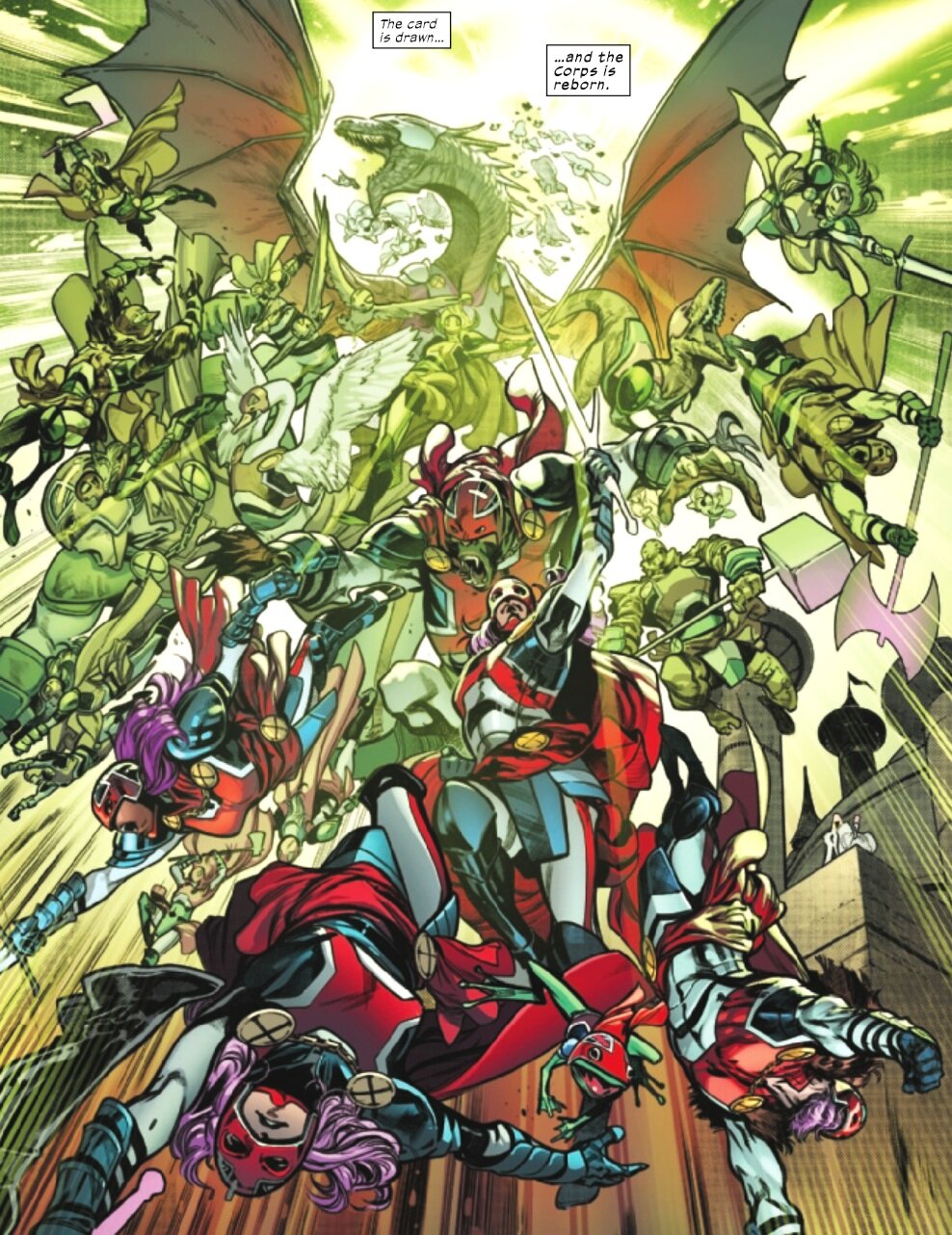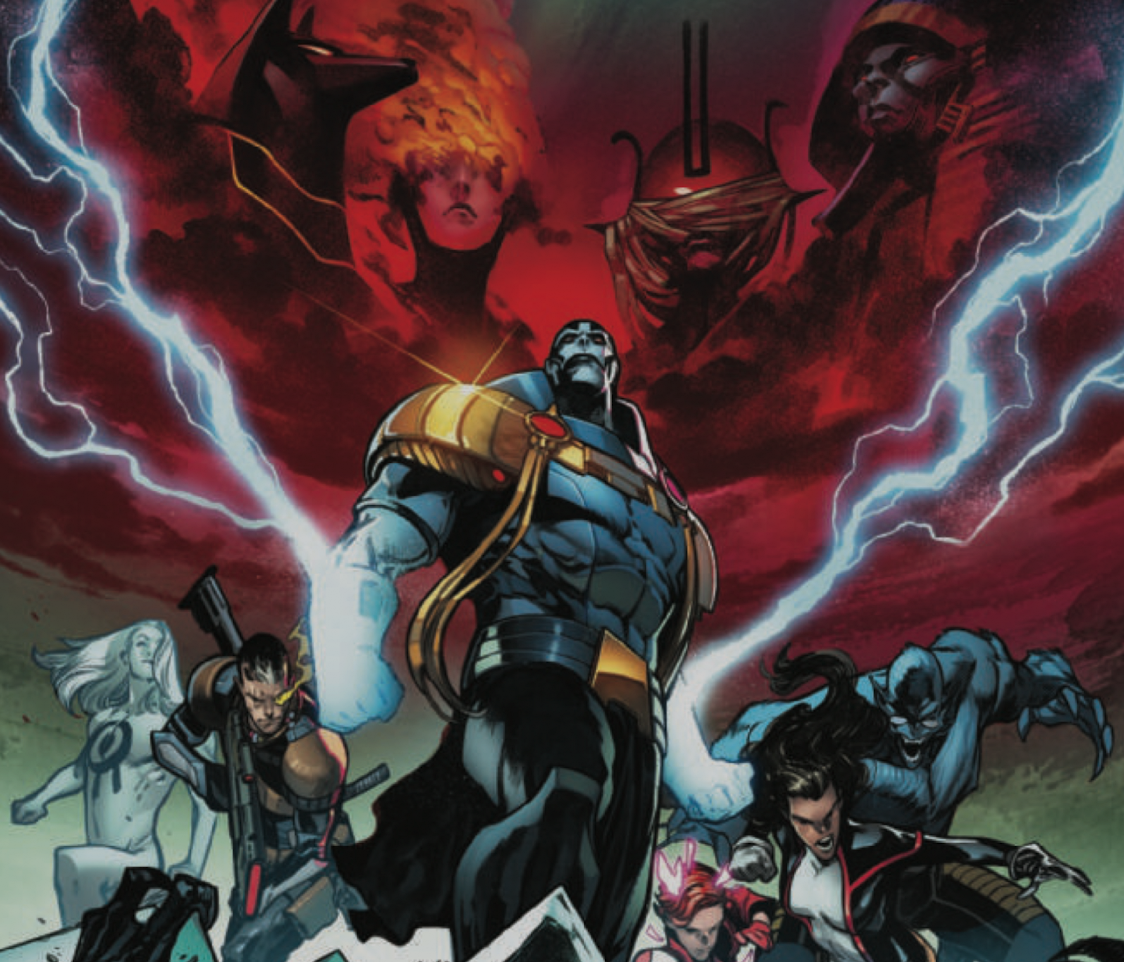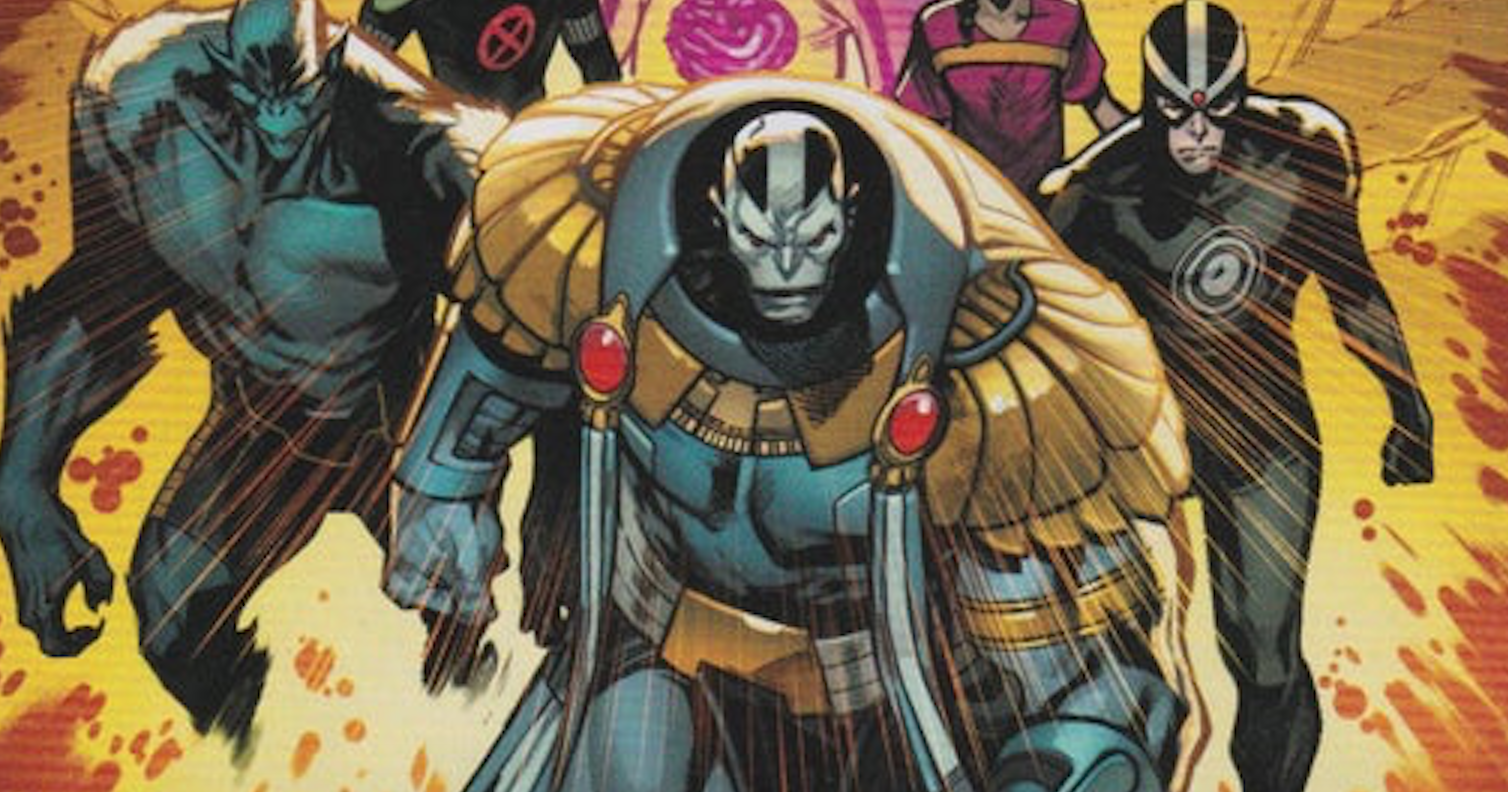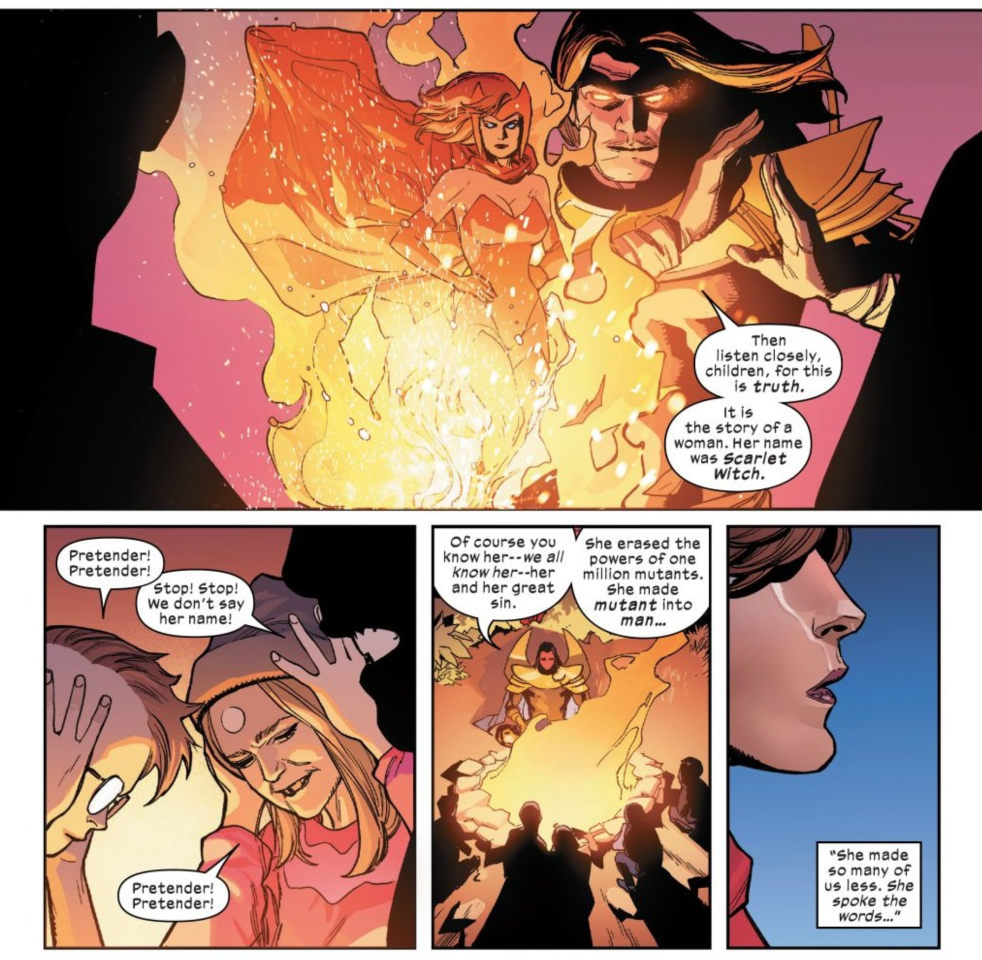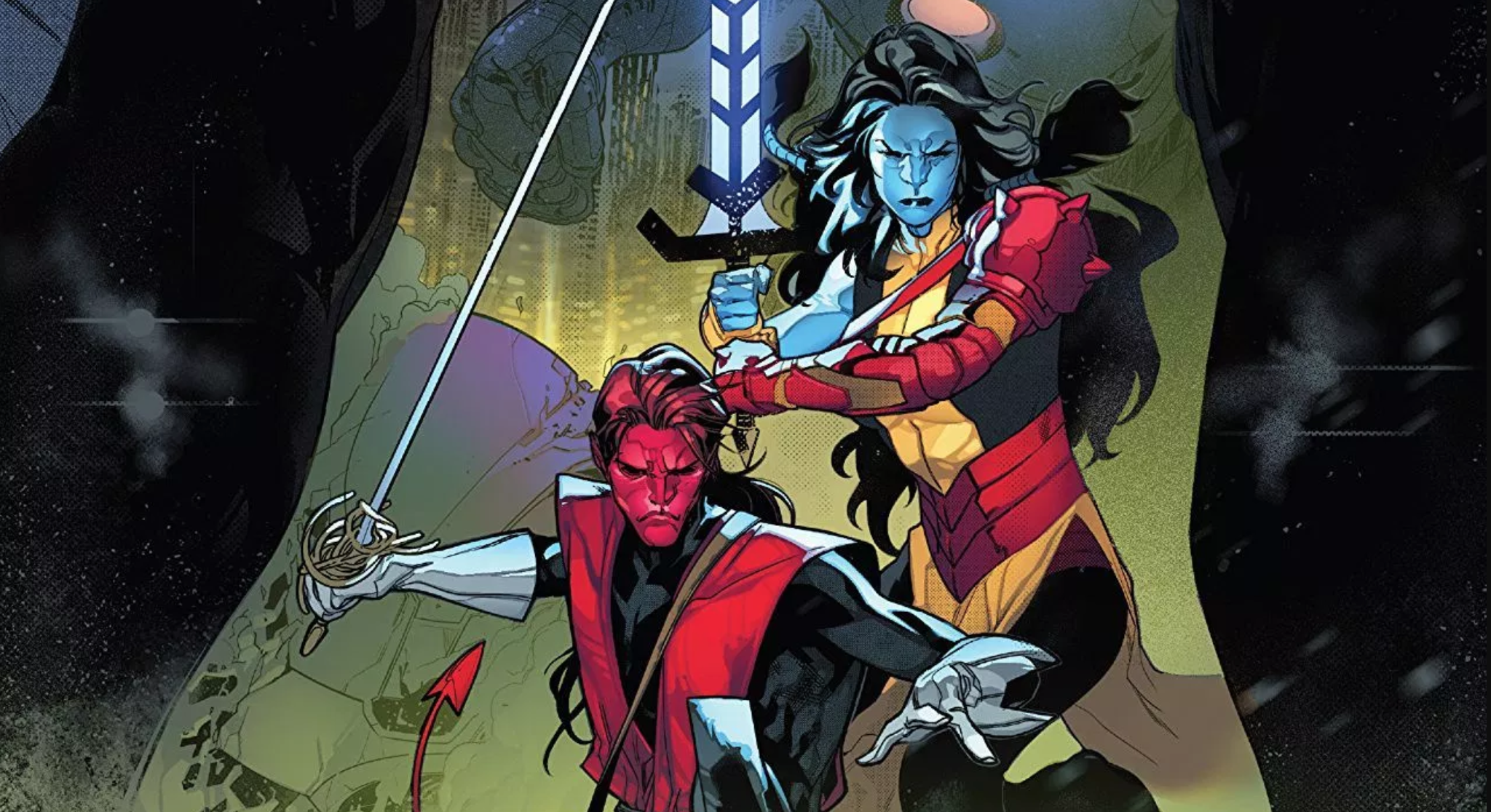Destruction
“X of Swords: Chapter 20”
X-Men #15
Written by Jonathan Hickman
Art by Mahmud Asrar
Color art by Sunny Gho
“X of Swords: Chapter 21”
Excalibur #15
Written by Tini Howard
Art by Mahmud Asrar and Stefano Caselli
Color art by Sunny Gho and Rachelle Rosenberg
“X of Swords: Chapter 22”
X of Swords: Destruction
Written by Jonathan Hickman and Tini Howard
Art by Pepe Larraz
Color art by Marte Gracia
• And so it ends! For me this hit just the right balance of hitting the beats I expected based on foreshadowing and structure while throwing enough curveballs to keep the plot suspenseful and interesting.
• The most surprising part of the finale is the simple fact that Apocalypse made it out of the story alive! It felt a lot like this storyline was meant to end tragically for him, but instead he comes out of this story as both the character who ends the conflict and liberates the mutants of Arakko, but also gets a happy ending in reuniting with his wife and children in Amenth. He got everything he wanted, and he earned it by letting go of his ego. It’s amazing to think that in a little over a year Jonathan Hickman and Tini Howard completely transformed Apocalypse from megalomaniacal arch villain with an incoherent philosophy into a sympathetic protagonist with a poignant backstory that explains a lot of what he’s done in the past but mostly points to interesting new directions for the character, whether he’s played as a hero or antagonist. This is a transformation on par with Chris Claremont fleshing out and adding depth and pathos to Magneto through the 1980s.
• And as Apocalypse gets everything he set out to accomplish, Opal Luna Saturnyne maneuvers everything in place to achieve victory over Amenth but quite definitively is denied the one thing she desires – Brian Braddock as both Captain Britain and her lover. Her role in this story is interesting, never quite conforming to protagonist or antagonist, and ending with an acknowledgment of her broken heart.
• X-Men #15 reestablishes the formal existence of the X-Men, which is a funny thing to say about the fifteenth issue of a comic book series called X-Men. There was some implication that anyone who was in action under Cyclops’ command was by default the X-Men, but the text pages in this issue show that the team was being phased out by the Krakoan government in favor of giving military power to the captains and X-Force (“the FORCE initiative”) for defense needs. But here we have Cyclops and Jean Grey deciding that there needs to be X-Men to act heroically without the hindrance of the Quiet Council’s politics. Jean is forced to step down from her seat on the council, which slightly disappoints her though she seems far more excited about creating a new sort of X-Men. It seems that the “anybody who needs to be an X-Man is an X-Man” approach will continue in a more formalized way, but likely with a more defined core group starring in Hickman’s flagship.
It feels more exciting for this development to happen as a response to a major crisis, and for it to come at a cost for Jean Grey. In retrospect the first year of Hickman stories was mostly setting narratives in motion and establishing the status quos of Krakoa, but now that we’ve got that all firmly in place the series can actually move forward with the most obvious element back in the mix – a team of superheroes. And Hickman is not hedging on the superhero thing, Cyclops and Jean Grey are presented as truly brave and idealistic people with pure motives, and the X-Men is a force for unambiguous good as a counter to the more pragmatic and morally dubious actions of the Quiet Council. This very earnest and retro portrayal of heroism feels as refreshing as any of Hickman’s more radical premises.
• Jean Grey’s forced exit from the Quiet Council and Apocalypse going off to Amenth marks the first shift in the Krakoan government, and I’m curious to see what the council does to replace them. I think it’s quite possible they don’t replace Apocalypse on the Autumn seats, given that he has not given up his position and he’s the man who reunited Krakoa and Arakko and liberated the Arakkii from Amenth. It’s a given that Jean will be replaced, presumably by another traditional X-Men member, as that was more or less the point of the Summer seats. Archangel seems to be a likely candidate, or maybe Banshee? Iceman doesn’t feel right, Beast is the head of the mutant CIA, Wolverine wouldn’t want it, and most everyone else is busy. It wouldn’t be a bad idea to get someone like Mirage in the mix, to represent the mutants of the Sextant.
• And what of Betsy Braddock? The ending establishes that she is the one true Captain Britain henceforth and that there is a new Captain Britain Corps of infinite versions of Betsy throughout the multiverse, much to the chagrin of Saturnyne. The text page at the end of X of Swords: Destruction indicates that our Betsy – Betsy Prime – is “missing,” which is quite an improvement over her presumed death in Excalibur #14. But we don’t see this, as this is setting up the next arc of Excalibur. That book should be quite interesting going forward, between the contentious relationship between Betsy and Saturnyne, and how much this story fleshed out the realms of Otherworld. I’m quite looking forward to seeing more of Sevalith and The Crooked Market in particular. And hey, what about Mercator?
• Isca the Unbeaten did turn to join the X-Men once the tide is turned by Apocalypse claiming the mantle of Annihilation, but I feel like it’s a fumbled beat. She doesn’t actually DO anything in this moment, she is simply shown feeling the compulsion to switch sides. It’s one of the few beats in Destruction that feels sort of inert. But it will be interesting to see what becomes of Isca – she is remaining on Arakko, and hence will be living on Earth. I imagine we’ll be seeing a lot of the Arakkii’s acclimation into Krakoan society through her eyes. It’s bound to be a very complicated process. Millions of Arakkii have been liberated from the hellish dominion of Amenth, but will they actually interpret this as such? It looks like they might just be going from being the vassal state of Amenth to the vassal state of Krakoa.
• The merging of Krakoa and Arakko represents the next stage of expansion for mutant society, loosely following the stages of societal types laid out in Powers of X. It seems very likely that the overall Hickman story follows Krakoa as it moves up through these ranks, and the next step is probably expanding into the cosmos in alliance with the Shi’ar. The “next” teaser at the end of Destruction certainly points in this expansionist/imperialist direction: Reign of X.
• Pepe “The God” Larraz delivers some truly astonishing pages in Destruction, this time shifting gears from the more atmospheric world building of the previous two Larraz issues to focus more on busy fight scenes in which he’s require to draw a staggering number of characters like a modern George Perez. His storytelling is excellent here, nailing all the big dramatic beats with great claritiy and potent emotion. His work on this storyline cements his position as the best and most exciting currently working for Marvel Comics, though nearly all the runners up – Mahmud Asrar, R.B. Silva, Rod Reis, Phil Noto, Joshua Cassara – also provided art for the story, and Carmen Carnero and Stefano Caselli stepped up in a major way for this too.
